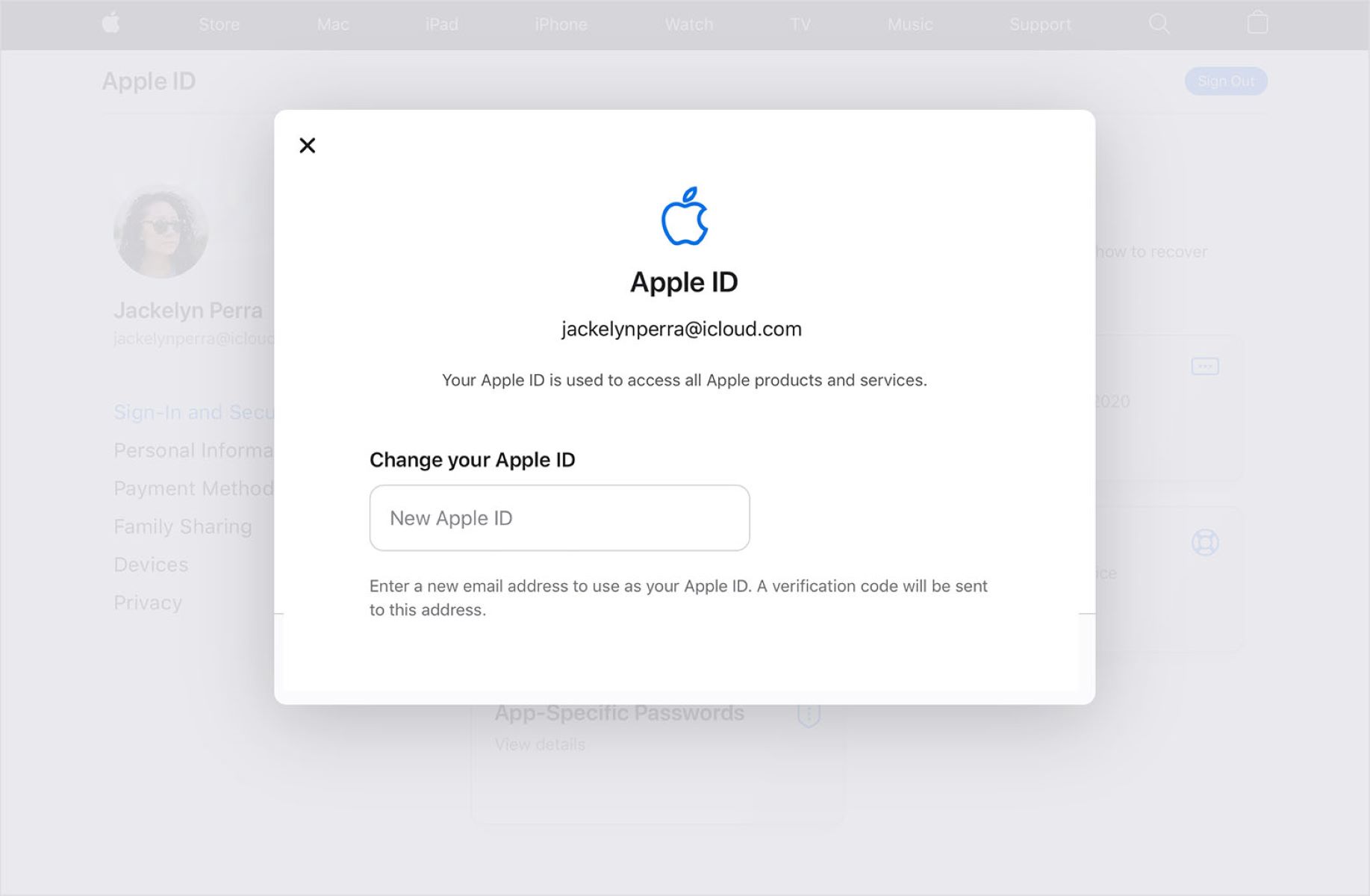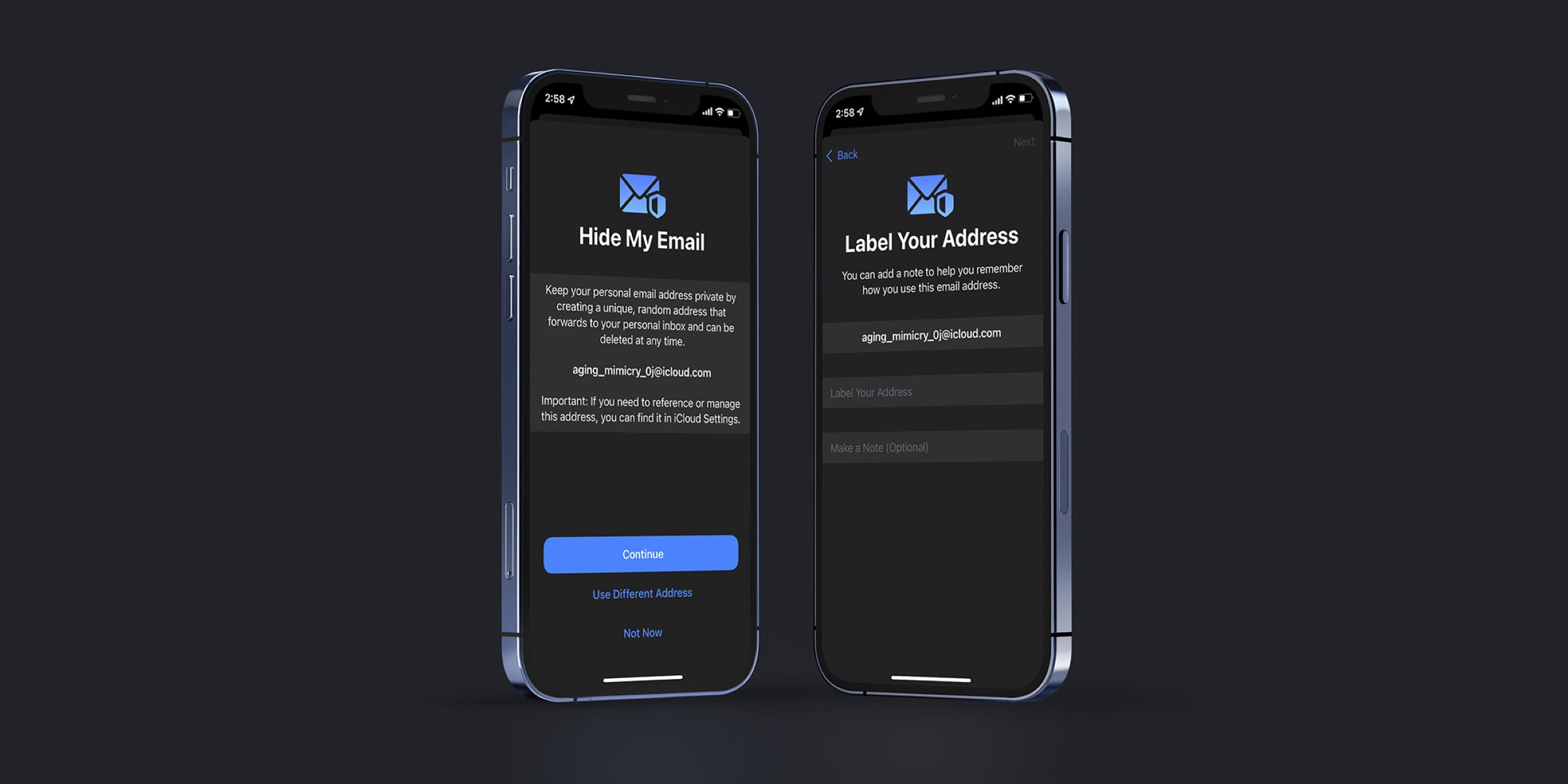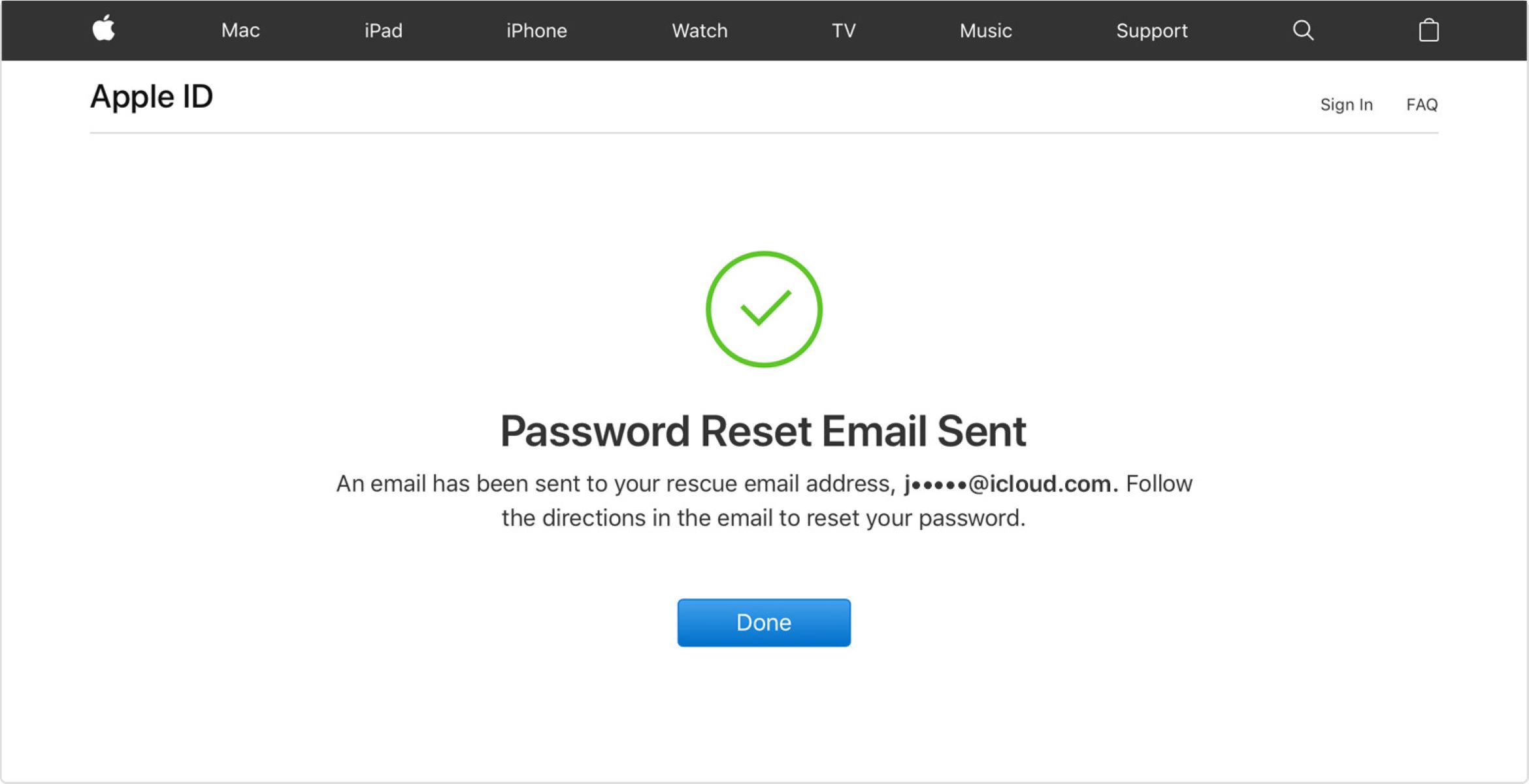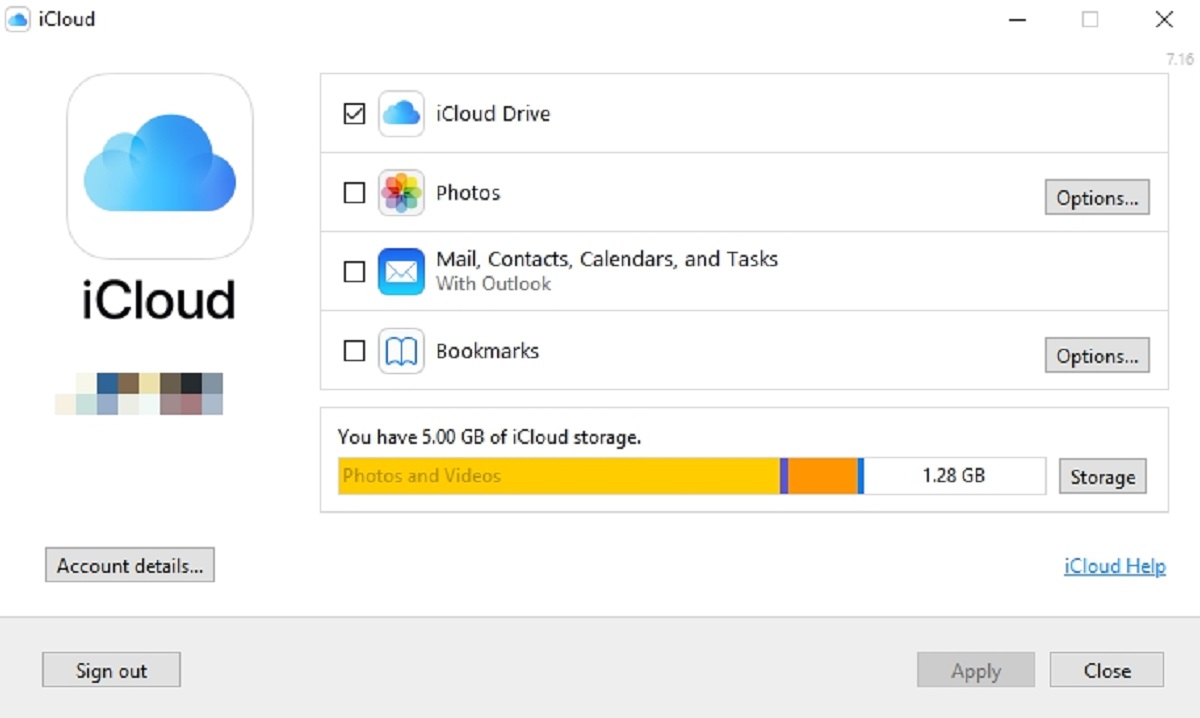Introduction
Welcome to the world of Apple Email, a powerful and intuitive email service that is tailored to meet your communication needs. Whether you are an individual looking for a reliable email platform or a business seeking efficient and secure communication tools, Apple Email has got you covered.
With its user-friendly interface and seamless integration with other Apple products and services, Apple Email offers a range of features to enhance your email experience. In this article, we will explore what Apple Email is, discuss its benefits, guide you through the setup process, highlight its key features, and provide tips and tricks for using it effectively. So, let’s dive in!
Apple Email, also known as iCloud Mail, is an email service provided by Apple Inc. It is designed to work seamlessly across all Apple devices, including iPhones, iPads, Macs, and even Windows computers. Whether you prefer to access your emails from a desktop or on the go, Apple Email ensures that your mails are synchronized and readily available.
One of the significant advantages of using Apple Email is its tight integration with the Apple ecosystem. By using Apple Email, you can seamlessly access other Apple services like iCloud Drive, Calendar, Contacts, and Notes. This integration allows you to easily collaborate, share files, and manage your schedule directly from your email account, saving you time and streamlining your workflow.
Moreover, Apple Email prioritizes your privacy and security. It employs advanced encryption measures to ensure that your emails and personal information are protected from unauthorized access. With Apple’s commitment to user privacy, you can rest assured that your data remains confidential and secure within the Apple Email system.
In the next sections, we will guide you through the process of setting up an Apple Email account, explore its features, and provide helpful tips for maximizing its potential. So, let’s get started and unleash the full potential of Apple Email!
What is Apple Email?
Apple Email, also referred to as iCloud Mail, is an email service provided by Apple Inc. It offers users a convenient and secure platform for sending, receiving, and managing their emails. With Apple Email, you can access your email account from any Apple device, including iPhones, iPads, Macs, and even Windows computers.
Apple Email is integrated seamlessly with other Apple services, such as iCloud Drive, Calendar, Contacts, and Notes, allowing for smooth collaboration and efficient organization. This integration ensures that you can easily share files, manage your schedule, and stay connected with your contacts, all from within your email account.
One of the standout features of Apple Email is its user-friendly interface. The intuitive design makes it easy to navigate through your inbox, compose new emails, and manage your folders and labels. Whether you are a tech-savvy individual or a novice user, Apple Email offers a user experience that is both accessible and enjoyable.
Privacy and security are of paramount importance when it comes to email services, and Apple Email excels in this aspect. It employs industry-leading encryption techniques to protect your data from unauthorized access. Additionally, Apple’s strong commitment to user privacy means that your personal information remains safe and guarded.
Another noteworthy aspect of Apple Email is its powerful spam filtering system. With advanced algorithms in place, Apple Email effectively detects and filters out unsolicited and potentially harmful emails, ensuring that your inbox remains clutter-free and your data is protected.
Furthermore, Apple Email provides ample storage space for your emails and attachments. With generous storage limits, you can store and organize your emails without worrying about running out of space. This enables you to retain important correspondence and access it whenever needed.
Whether you use Apple Email for personal or professional purposes, its versatile features cater to your specific needs. From creating custom aliases and setting up email rules to syncing your email across devices in real-time, Apple Email offers a range of tools to personalize your email experience and boost your productivity.
In the next sections, we will delve deeper into the benefits of using Apple Email, guide you through the process of setting up an account, explore its key features, and provide tips and tricks for using it effectively. Stay tuned to unlock the full potential of Apple Email!
Benefits of using Apple Email
Using Apple Email as your preferred email service comes with several notable advantages. Whether you are a casual user or a business professional, the following benefits highlight why Apple Email is a popular choice:
- Seamless Integration: Apple Email seamlessly integrates with other Apple services, such as iCloud Drive, Calendar, Contacts, and Notes. This integration allows for effortless collaboration, file sharing, and organization. You can sync your emails, contacts, and calendar events across all your Apple devices, ensuring that you stay connected and productive wherever you are.
- User-Friendly Interface: Apple Email boasts a clean and user-friendly interface, making it easy to navigate and manage your email account. With intuitive features like drag-and-drop and keyboard shortcuts, you can quickly organize your inbox, compose emails, and perform various actions efficiently.
- Privacy and Security: Apple is known for its commitment to privacy and security, and Apple Email is no exception. The service employs robust encryption methods to protect your emails and personal information from unauthorized access. With Apple’s stringent privacy policies, you can have peace of mind knowing that your data is secure.
- Spam Filtering: Apple Email includes a powerful spam filtering system that effectively detects and filters out unsolicited and potentially malicious emails. This ensures that your inbox remains free from clutter and reduces the risk of falling victim to phishing attempts and other email-based threats.
- Generous Storage Space: Storage is rarely an issue with Apple Email. The service offers generous storage limits, allowing you to store and organize a significant amount of emails and attachments. You can keep important correspondences and access them whenever needed without worrying about running out of space.
- Cross-Platform Access: Whether you are an iPhone, iPad, Mac, or Windows user, Apple Email is accessible from any device with an internet connection. This flexibility enables you to stay connected and manage your emails regardless of the device you are using.
- Reliable and Stable: Apple’s infrastructure ensures that their email service remains reliable and stable. You can trust that your emails will be delivered promptly and that you won’t experience frequent disruptions or downtime.
- Customization Options: Apple Email offers various customization options to tailor your email experience. You can create custom email aliases, set up email rules and filters, and personalize your email signature to suit your personal or business needs.
These benefits make Apple Email a preferred choice for millions of users worldwide. In the next sections, we will guide you through the process of setting up an Apple Email account, explore its features in-depth, and provide tips and tricks to help you make the most out of this powerful email service.
How to Set Up an Apple Email Account
Setting up an Apple Email account is a straightforward process that can be completed in a few simple steps. Follow the instructions below to get started:
- Step 1: Access iCloud Settings: On your Apple device, go to the Settings app and tap on your Apple ID profile at the top. From there, tap on “iCloud” to access the iCloud settings.
- Step 2: Create an Apple ID: If you don’t have an Apple ID, you will need to create one. Tap on “Create a new Apple ID” and follow the on-screen instructions to set up your Apple ID. If you already have an Apple ID, skip to the next step.
- Step 3: Set Up iCloud Mail: In the iCloud settings, scroll down to the “Apps Using iCloud” section and enable the toggle button next to “Mail.” This will enable iCloud Mail for your Apple ID.
- Step 4: Choose an Email Address: Once you have enabled iCloud Mail, you will be prompted to choose an email address. You can either create a new “@icloud.com” email address or use an existing email address that you have.
- Step 5: Complete the Setup: Follow the on-screen instructions to complete the setup process. You may be asked to enter additional information such as your name, password, security questions, and contact details.
- Step 6: Verify Email Address: If you are using a new “@icloud.com” email address, you will receive a verification email. Open the email and click on the verification link to confirm your email address.
- Step 7: Configure Email Settings: Once you have set up your Apple Email account, you can further customize the email settings to your liking. This includes adjusting notification preferences, setting up email signatures, and managing email rules and filters.
That’s it! You have successfully set up your Apple Email account. Now you can start sending, receiving, and managing your emails with ease.
Note that these instructions are specific to Apple devices. If you are using a Windows computer, you can still set up an Apple Email account by accessing iCloud Mail through your web browser. Simply visit iCloud.com, sign in with your Apple ID, and access the Mail section to start using your Apple Email account.
In the next sections, we will explore the features of Apple Email in more detail, providing you with a glimpse of what this powerful email service has to offer.
Features of Apple Email
Apple Email comes equipped with a range of features designed to enhance your email experience. Let’s take a closer look at some of its notable features:
- Intuitive Interface: Apple Email features an intuitive and user-friendly interface that makes it easy to navigate and manage your inbox. With a clean layout and organized design, you can efficiently handle your emails and perform various actions with ease.
- Seamless Integration: One of the standout features of Apple Email is its seamless integration with other Apple services. You can effortlessly collaborate and share files using iCloud Drive, sync your email with your Calendar and Contacts apps, and access your important notes through integration with the Notes app.
- Sync Across Devices: With Apple Email, your emails, contacts, calendar events, and other data seamlessly synchronize across all your Apple devices. Whether you compose an email on your iPhone or read it on your MacBook, the changes are reflected across all your devices in real-time.
- Email Filtering: Apple Email includes robust email filtering capabilities, allowing you to automatically sort and prioritize your emails. You can create rules to organize incoming messages, filter out spam, and flag important emails so that you never miss any crucial information.
- Advanced Search: Finding specific emails and information within your mailbox is effortless with Apple Email’s advanced search feature. You can search based on sender, subject, keywords, and specific date ranges to quickly locate the emails you need.
- Email Aliases: Apple Email provides the option to create custom email aliases. This allows you to use different email addresses for different purposes while all emails are received and managed within one inbox. It helps to keep your personal and professional correspondence separate and organized.
- Email Encryption: Apple Email prioritizes your privacy and security. All your emails are encrypted in transit and at rest, ensuring that your sensitive information remains protected. This encryption provides an extra layer of security against unauthorized access.
- Email Signature: Personalize your emails with custom email signatures. Apple Email allows you to create professional and personalized signatures to add that personal touch to your outgoing messages.
- Attachment Collaborations: Collaborating on attachments is made easy with Apple Email. You can directly annotate and mark up attachments, making it convenient for team collaborations and feedback.
- Localized Languages: Apple Email supports a wide range of languages, allowing you to use the interface and compose emails in your preferred language. This feature provides a localized experience for users from different regions.
These features make Apple Email a powerful and versatile email service that caters to both personal and professional needs. In the next sections, we will provide you with tips and tricks for using Apple Email effectively, allowing you to take full advantage of its capabilities.
Tips and Tricks for Using Apple Email Effectively
Apple Email offers several tips and tricks that can help you maximize your productivity and ensure an efficient email experience. Here are some valuable tips to make the most out of Apple Email:
- Organize with Folders and Labels: Create folders and labels to categorize and organize your emails. This allows you to easily locate specific emails and keep your inbox clutter-free. Use meaningful names for your folders and labels to quickly identify their contents.
- Utilize Email Rules and Filters: Take advantage of Apple Email’s email rules and filters feature. Set up automated rules to sort incoming emails into specific folders, flag important messages, or automatically delete unwanted spam. This helps streamline your inbox and saves time when managing your emails.
- Master Keyboard Shortcuts: Learn the keyboard shortcuts specific to Apple Email. These shortcuts can significantly speed up your email management tasks. From composing new emails to archiving or deleting messages, keyboard shortcuts simplify your workflow and boost your efficiency.
- Use VIP and Flagged Mail: Make use of the VIP feature to mark important contacts in your email address book. Emails from VIPs will be more easily noticeable and can help you prioritize responses. Additionally, you can flag certain emails to highlight their importance and indicate that they require your immediate attention.
- Set up Email Notifications: Customize your email notifications to stay on top of your important messages. You can choose to receive notifications for new emails, VIP emails, or emails from specific folders. By managing your notifications effectively, you can avoid unnecessary distractions while ensuring you don’t miss critical emails.
- Unsubscribe from Unwanted Mailing Lists: If you find yourself receiving too many unwanted promotional emails or newsletters, take advantage of the Apple Email unsubscribe feature. This allows you to quickly and easily unsubscribe from mailing lists directly from the email itself, reducing inbox clutter.
- Use Smart Mailboxes: Create smart mailboxes to automatically group and display specific types of emails based on set criteria. For example, you can create a smart mailbox that shows all unread emails or emails with attachments. Smart mailboxes help you stay organized and quickly access relevant emails.
- Customize Swipe Gestures: Customize swipe gestures for quick actions in Apple Email. You can configure swipe gestures to perform actions like marking emails as read, deleting emails, or moving them to specific folders. This allows you to streamline your email management process and save time on repetitive tasks.
- Utilize Siri Shortcuts: Take advantage of Siri shortcuts to perform email tasks hands-free. With Siri integration, you can compose new emails, check your inbox, or search for specific emails using voice commands. This is especially useful when you’re on the go or need to quickly send an email without typing.
- Regularly Clean and Archive: Set aside time to regularly clean and archive old emails. Archiving older emails keeps your inbox organized while still allowing you to access them if needed. This practice helps improve email performance and ensures that your inbox remains manageable.
By implementing these tips and tricks, you can harness the full potential of Apple Email and optimize your email management. Experiment with these features and techniques to find the ones that work best for your workflow and preferences.
In the next sections, we will address common issues that users may encounter with Apple Email and provide troubleshooting tips to resolve them.
Common Issues with Apple Email and How to Fix Them
While Apple Email is known for its reliability, users may occasionally encounter some common issues. Here are a few of the most common issues that users may face with Apple Email and their corresponding troubleshooting steps:
- Email Sync Issues: If you notice that your emails are not syncing properly across your devices, ensure that you have a stable internet connection. If the problem persists, try signing out and back into your Apple ID on all your devices. This can often resolve any sync problems.
- Email Not Sending: If you are having trouble sending emails, check your internet connection and ensure that you have entered the correct recipient’s email address. You can also try quitting and reopening the Mail app or restarting your device to resolve any temporary glitches. If the issue continues, check your email account settings to ensure they are configured correctly.
- Difficulty Receiving Emails: If you are not receiving emails, start by checking your internet connection and ensuring that your inbox is not full. If the issue persists, check your email account settings to make sure that your email address is spelled correctly and that your incoming mail server settings are accurate.
- Missing Emails: If you are unable to locate specific emails that you know should be in your inbox, try searching for them using keywords or the sender’s name. If the emails are still missing, check your email filters and ensure that they are not automatically being moved to a different folder or being flagged as spam.
- Slow Email Performance: If Apple Email is running slowly or lagging, start by closing any unnecessary apps or programs that may be using up system resources. Additionally, ensure that your device’s software is up to date, as outdated software can sometimes lead to performance issues. Clearing the cache and temporary files of the Mail app can also help improve performance.
- Difficulty Logging In: If you are having trouble logging into your Apple Email account, double-check that you are entering the correct Apple ID and password. If you have forgotten your password, you can use the account recovery options provided by Apple to reset it. Ensure that your internet connection is stable, as a weak connection can sometimes cause login issues.
- Email Delivery Delays: If you are experiencing delays in email delivery, ensure that your internet connection is stable and that you have sufficient network bandwidth. Check your outgoing mail server settings to ensure they are correct, and also ensure that the recipient’s email server is not experiencing any issues that may cause delays.
- Spam Emails: If you are receiving a large amount of spam emails, mark them as junk/spam within the Apple Email app. This helps improve the spam filtering system and reduces the chances of similar emails ending up in your inbox in the future. You can also add specific senders to your blocked list to prevent their emails from reaching your inbox.
If these troubleshooting steps do not resolve the issue you are experiencing with Apple Email, contacting Apple Support or visiting an Apple Store may provide further assistance and guidance tailored to your specific situation.
In the final section, we will wrap up this article by summarizing the key points discussed and reiterating the benefits of using Apple Email.
Conclusion
Apple Email, also known as iCloud Mail, offers a host of features and benefits that make it a reliable and efficient email service choice. With its seamless integration with other Apple services, user-friendly interface, and robust privacy and security measures, Apple Email provides a well-rounded email experience for individuals and businesses alike.
In this article, we explored the purpose and functionality of Apple Email. We discussed the benefits it offers, such as seamless integration with other Apple services, user-friendly interface, privacy and security measures, and effective spam filtering. We also provided a step-by-step guide on how to set up an Apple Email account and highlighted key features like email filtering, encryption, and attachment collaborations.
Additionally, we shared tips and tricks to help you use Apple Email more effectively. These included organizing your emails with folders and labels, utilizing email rules and filters, mastering keyboard shortcuts, and customizing swipe gestures. We also discussed common issues that users may encounter with Apple Email and provided troubleshooting steps to resolve them.
By following the tips and utilizing the features and functionality of Apple Email, users can enhance their email management and streamline their communication processes.
Whether you are a student, professional, or business owner, Apple Email provides the tools and features necessary to stay organized, productive, and connected. With its integration across devices, advanced search capabilities, and customizable settings, Apple Email serves as a comprehensive email solution that caters to the diverse needs of its users.
So, why not give Apple Email a try and experience the seamless synchronization, privacy, and convenience it offers? Set up your Apple Email account today and unleash the full potential of this robust email service.

























